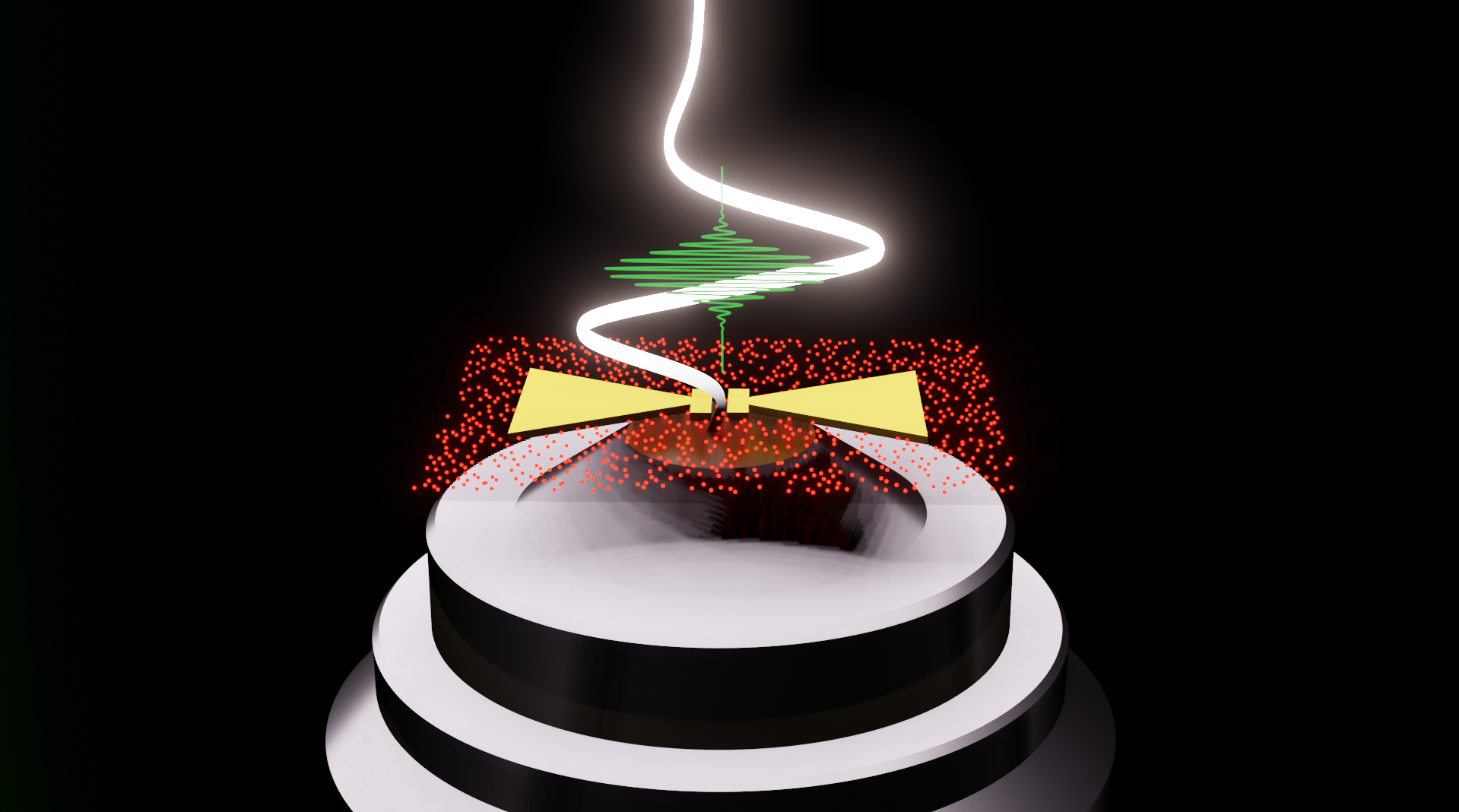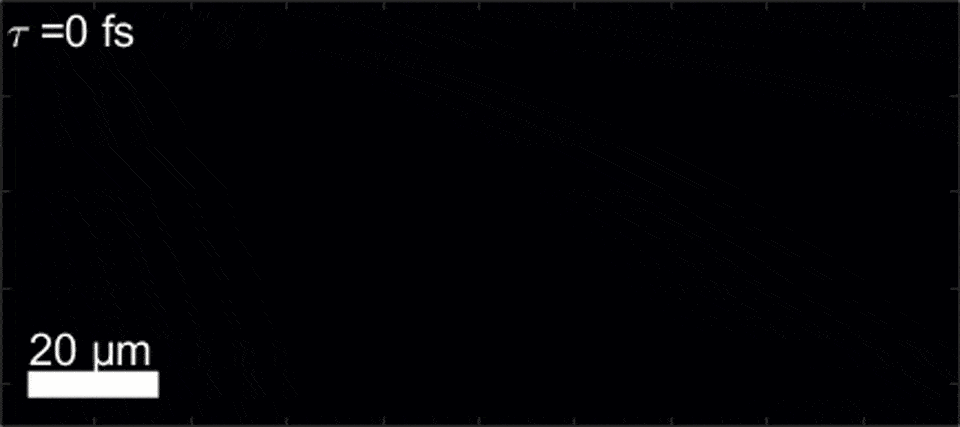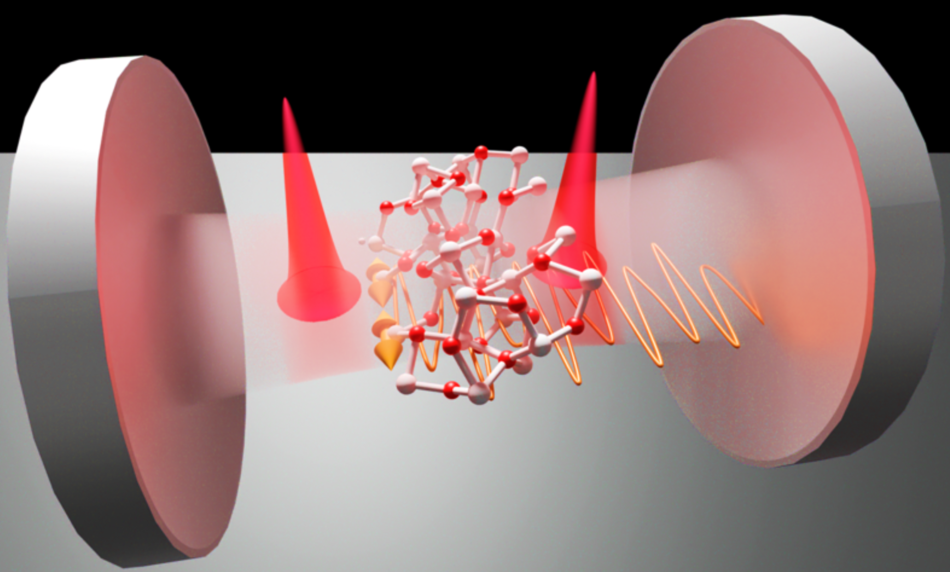Research
In our labs, we investigate ultrafast phenomena in materials and nonlinear light-matter interactions induced by light pulses from the visible to the far-infrared (Terahertz) part of the electro-magnetic spectrum. Intense Laser pulses presents our most important experimental tool to induce, sample and control ultrafast processes. At the interface of ultrashort-time spectroscopy, nano-optics and material sciences, we develop novel instruments to acquire spatially and/or spectrally resolved movies of rapid transients to decrypt the inner-workings.
Current research activities cover the three main areas:
- Terahertz Strong-Field Physics: Field-driven nonlinear phenomena in solids and nanostructures
- Nonlinear Optics and Real-Time Spectroscopy: Interactions of temporal solitons, fast and non-reversible dynamics
- Time-resolved Terahertz Dynamics: Pump-probe spectroscopy of complex nanomaterials
Recent Highlights:
- Quantum-probe Field Microscope (QFIM) for Terahertz near fields

Highly nonlinear interactions of light with matter, elementary excitations in solids and novel multi-terahertz devices can be driven directly by the electric field of light waves. In order to precisely follow ultrafast and phase-sensitive processes in complex sample systems, a novel electric field microscope has been developed in our group: The Quantum-probe Field Microscope (QFIM) uses semiconductor quantum dots as a field-sensitive coating, which allows us to record ultrafast movies of electric field distributions.

Hereby, we gain insights into the function of ultrafast electronic devices in THz detectors, active metamaterials and excitations in complex material systems. For this purpose, a phase-stable single-cycle pulse in the terahertz spectrum (1 THz = 1e12 Hz) generates local near-fields that are sampled in time using ultrashort visible femtosecond pulses: Using the quantum-confined Stark effect, the THz field modulates the luminescence of quantum dots that can be stroboscopically imaged by a fluorescence optical microscope. We obtain "movies" of the ultrafast electric fields, such as the one inside a THz dipole antenna shown in the video on the left.
Whereas typical near-field microscopes are based on sensitive nanotips, very robust sensor coatings can be developed via special "quantum probes" to obtain unprecedented QFIM-insights into the dynamics of highly excited material systems, highly nonlinear phenomena and active ultrafast devices in-operando.
Moritz B. Heindl, et al.: Ultrafast imaging of terahertz electric waveforms using quantum dots, Light: Science & Applications (2022), https://doi.org/10.1038/s41377-021-00693-5
- Nonlinear Soliton Dynamics: Intracavity Raman Scattering and THz-Spectroscopy
Stable, non-dispersive pulses, so-called "solitons", arise from nonlinearities in a variety of excited systems - from water surfaces to magnetic excitations to light flashes in optical fibers. We study the generation and interaction of optical solitons in active nonlinear systems. Particularly exciting compounds - temporal soliton molecules - can be observed in ultrashort pulse light sources. These enable a kind of "soliton chemistry" with switchable doublets, triplets, endlessly oscillating pulse intervals or formation of regular "crystals" from femtosecond pulses. The interactions between individual solitons are extraordinarily diverse – and our understanding still limited.

In a recent work, we discover and elucidate a central and novel mechanism for coupling optical solitons with coherent terahertz phonons: A leading pulse excites collective lattice oscillations via impulsive stimulated Raman scattering in the laser crystal of an ultrashort pulse laser. These phonons decay over a period of a few picoseconds - and can be sampled by a subsequent pulse while it catches up with the leading pulse. Finally, the second pulse can be held and stably bound at the vibrational maxima of the phonon beat. This process explains a variety of observations that have been reported for decades in diverse laser sources. In particular, a new high-speed implementation for intracavity Raman spectroscopy of phonon excitations in the time domain follows directly from our results. The experimental basis for these studies is an extremely fast real-time optical spectroscopy based on the physical realization of the optical Fourier transform.
Alexandra Völkel, Luca Nimmesgern, Adam Mielnik-Pyszczorski, Timo Wirth, Georg Herink: Intracavity Raman Scattering couples Soliton Molecules with Terahertz Phonons. Nature Communications 13, 2066 (2022). DOI: https://doi.org/10.1038/s41467-022-29649-y
See also the press release: https://www.uni-bayreuth.de/pressemitteilung/solitonen
In contrast to the ultrashort soliton bonds due to the Raman effect, solitons with spacings of several picoseconds to nanoseconds are often observed in femtosecond fiber lasers. Here, the coupling usually results from the superposition of a very weak reflection of the first pulse with a subsequent pulse. In the case of multiple reflections, one can quickly switch between these states by short power modulations: This provides switchable pulse pairs for time-resolved spectroscopy, as we have recently demonstrated.
Luca Nimmesgern, Cornelius Beckh, Hannes Kempf, Alfred Leitenstorfer, and Georg Herink, "Soliton molecules in femtosecond fiber lasers: universal binding mechanism and direct electronic control," Optica 8, 1334-1339 (2021).
Our research is funded by:


IRTG Optical excitations in organic and inorganic semidconductors (OPTEXC)
